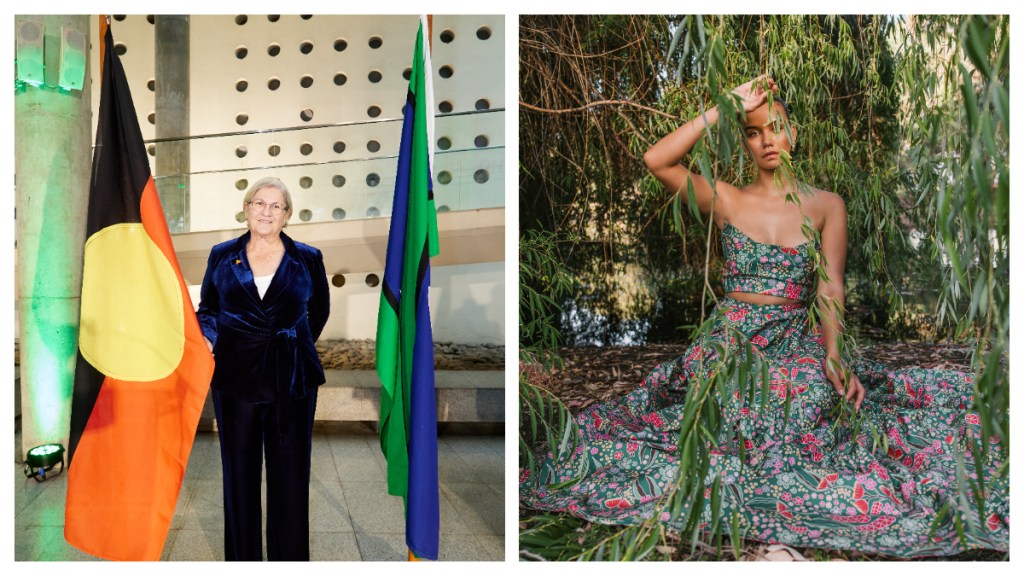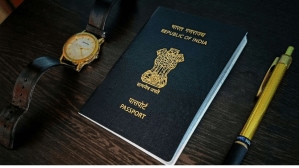Indigenous Australian fashion label Kirrikin has become a powerful voice for native storytelling through fashion. Founded by Amanda Healy, who was in Delhi recently for a fashion show, the label has grown from a social enterprise to a globally recognised brand. As Kirrikin marks its 10th anniversary, Healy reflects on heritage, cross-cultural collaborations with India, and why storytelling remains at the heart of everything they do. Edited excerpts from an interview:
Kirrikin is celebrating its 10th anniversary this year. Looking back, what do you feel has been the most defining moment?
I think it was likely the first international runway we did in Shenzhen, China. It was a fabulous event, and a strong collection —it really lifted our sights and helped us understand that there was international interest in what we do. That was in 2018.
How do you balance the authenticity of indigenous storytelling with contemporary fashion trends?
We’ve never tried to be a ‘trendy’ brand. We see ourselves as everyday wear with strong cultural roots. Our focus is on social responsibility and contribution to indigenous culture rather than chasing trends. Storytelling is central to everything—we work only with indigenous artistes who bring their own stories.
If you had to describe Kirrikin in just three words to an Indian reader, what would they be?
Socially responsible clothing.
How does your heritage shape Kirrikin’s philosophy?
My heritage, particularly my grandmothers, inspires everything I do. They lived through a period of colonisation that stripped them of their identity—they weren’t allowed to speak their language or practise their culture. I feel a responsibility to honour them and help right those historical wrongs. Many indigenous communities still face poverty, and our work aims to create opportunities and pride in culture.
What role does storytelling play in Kirrikin’s designs, and how do international audiences respond to them?
Storytelling is how our culture has survived for thousands of years. Every artwork has meaning—even flowers from the Pilbara tell a story. International audiences love a connection with real people, with real stories, and particularly a growing interest in indigenous culture worldwide. Our biggest client base is in Australia of course, but we play into the cultural tourism market a bit too, and we find we have a regular client base throughout the world. Europe is a strong market for us during their summer months—and I believe it is because they understand the impact of colonisation.
Kirrikin’s designs are developed in Australia but manufactured in Noida. What does this cross-cultural collaboration mean for you?
India offers incredible fabric and printing options. We choose digital printing to reduce chemicals and water usage, and recycled fabrics are becoming more common. The Australia-India Economic Cooperation Trade Agreement has made production more cost-effective, and I love the creativity of Indian artisans. One of my favourite recent pieces is a dress with “blinged up” kangaroos—a big hit on the runway.
Do you find parallels between Indian artisanal traditions and indigenous Australian art forms?
Absolutely. We share similar histories, and even some of our languages sound alike. While India has a long tradition of fine fabrics, we express culture through artwork, colour and storytelling. I am looking forward to exploring a little more of the artistic traditions of India on this visit and will be spending some time visiting Fabindia!
What excites you most about presenting Kirrikin to Indian audiences?
I love seeing Indian fashion—the colours, the elegance, the confidence. But I’m equally excited to share our story and see the conversations it sparks.
What’s next for Kirrikin after its 10-year milestone?
Our purpose as a social enterprise is to create sustainable incomes for our remote artistes, who otherwise would find it difficult to gain a regular income—we will continue to work on developing our product lines and looks to gain better outcomes for our artistes. We have only female artistes, many of
them single mothers, so it is very rewarding work.








